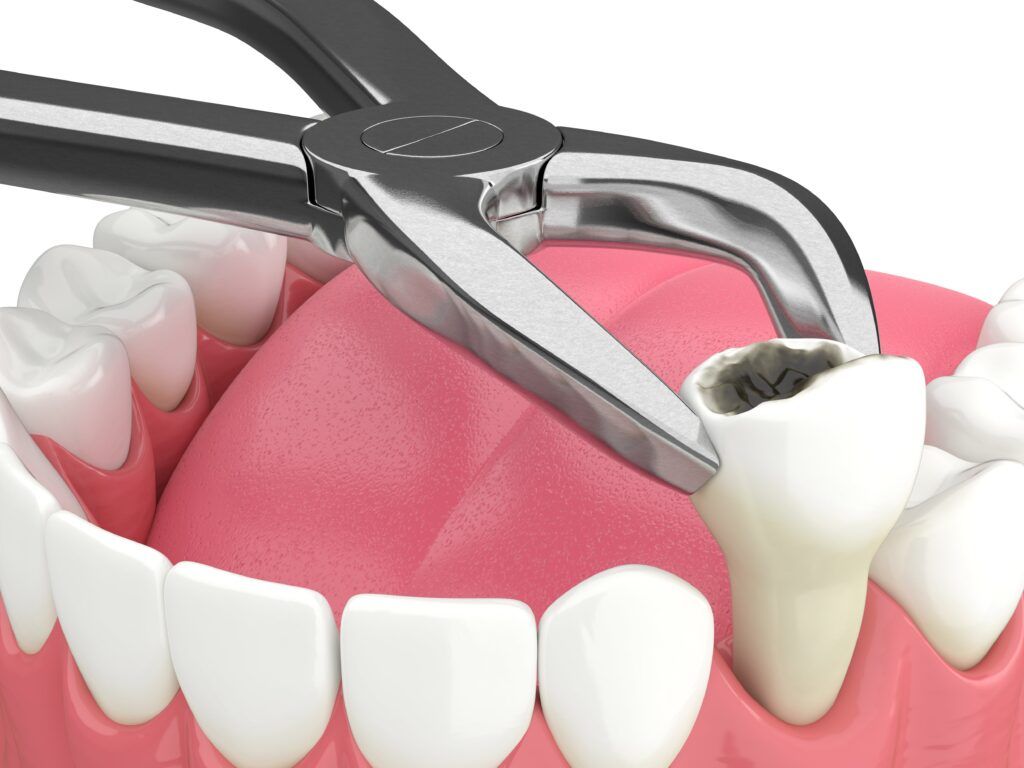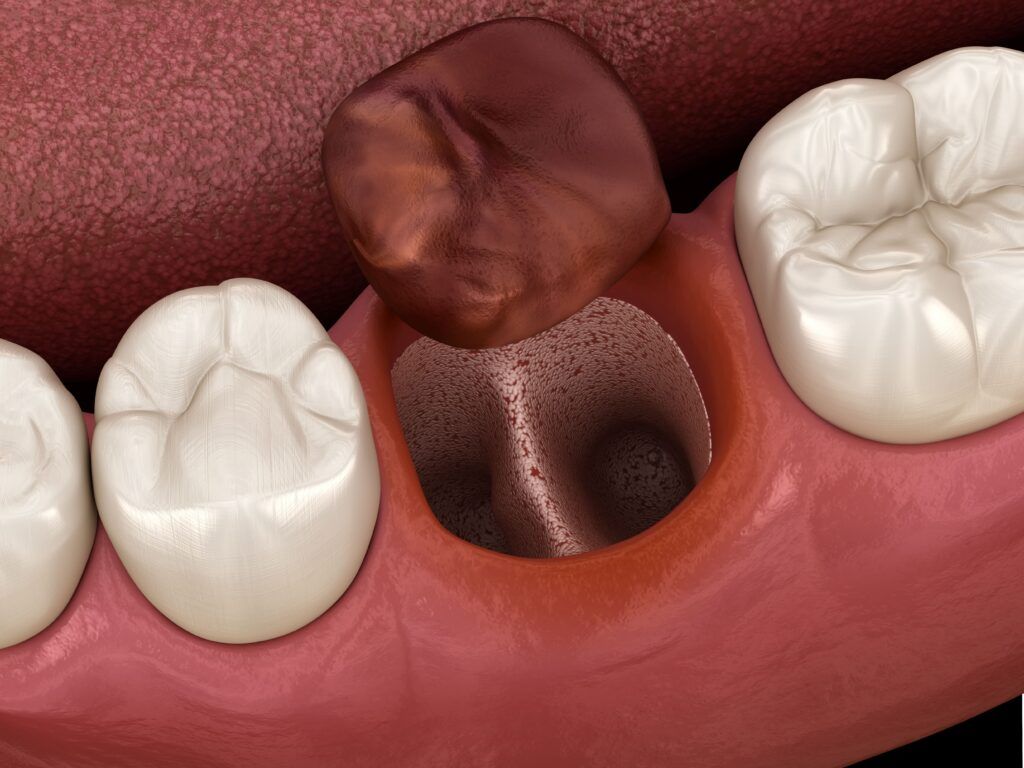If you’re considering or preparing for a tooth extraction, it’s natural to feel a mix of anticipation and nerves. Tooth extraction, while common, plays a crucial role in both resolving dental issues and enhancing the overall aesthetics of your smile. In this post, we will guide you through what to expect from the initial consultation to the recovery process. Our goal is to provide you with a comprehensive understanding of the procedure, demystifying each step so that you can approach your extraction with confidence and peace of mind. Whether you’re dealing with an impacted wisdom tooth, preparing for orthodontic treatment, or addressing severe decay, we’re here to ensure you are well-prepared for a successful outcome.
Why Tooth Extractions May Be Necessary
First and foremost, it’s important to understand why a tooth extraction is necessary. Tooth extractions are not just about removing a tooth; they are often a vital part of enhancing oral health and can have aesthetic benefits as well. Here are some common reasons why extractions may be recommended:
- Impacted Wisdom Teeth: These teeth can crowd other teeth, potentially causing pain and misalignment.
- Severe Decay or Infection: When a tooth is beyond repair, removing it can prevent the spread of decay or infection.
- Preparation for Dental Procedures: Extractions can make space for better alignment in orthodontic treatments or prepare the mouth for dental implants.
Understanding the reasons behind the need for an extraction can help you see it as a positive step towards a healthier, more attractive smile.
Preparing for Your Tooth Extraction
Preparation is key to ensuring your tooth extraction goes smoothly. Here’s what you can do to get ready:
- Consultation and X-rays: Your dentist will conduct a thorough examination and take X-rays to assess the affected tooth’s condition and the surrounding bone structure.
- Medical History: Be open about your medical history and any medications you are taking. Some conditions and medications can affect your surgery and recovery.
- Anesthesia Options: Discuss anesthesia options with your dentist. Most extractions only require local anesthesia, but if you’re particularly anxious, sedation might be available.
- Post-Procedure Plan: Plan ahead for your recovery. Arrange for someone to drive you home if you’ll be sedated, and prepare a comfortable recovery area in your home.
The Extraction Process
Understanding the steps involved in the tooth extraction process can help alleviate some of the anxiety associated with dental procedures. Here’s what you can expect during a typical tooth extraction:
Anesthesia Administration:
The first step in any extraction is to ensure that you are comfortable and pain-free. Depending on the complexity of the extraction and your personal comfort level, your dentist may use one of several types of anesthesia:
- Local Anesthesia: This is commonly administered via an injection near the site of the extraction to numb the area. You’ll be awake and aware, but you shouldn’t feel any pain during the procedure.
- Sedation Anesthesia: Administered through an intravenous (IV) line in your arm, sedation anesthesia suppresses your consciousness during the procedure. You may have limited memory of the process.
- General Anesthesia: In rare cases, or in the case of extensive surgical procedures, you may receive general anesthesia, under which you will be completely unconscious.
Tooth Loosening and Removal:

Once the anesthesia has taken effect, the dentist will use specialized instruments to gently rock the tooth back and forth to loosen it from the jaw bone and ligaments that hold it in place. This is typically done using an instrument called an “elevator.” After the tooth is loosened, forceps are used to remove the tooth.
Simple vs. Surgical Extractions:
There are two different types of tooth extraction techniques that may be used:
- Simple Extractions: These are performed on teeth that are visible in the mouth. Simple extractions are generally more straightforward and involve minimal cutting into the gum.
- Surgical Extractions: These involve teeth that cannot be easily accessed because they have not fully erupted through the gum line or have broken off at the gum line. Surgical extractions require a small incision into the gum to access the affected tooth.
Closure and Stitches:
After the tooth has been extracted, the dentist may need to close the extraction site with stitches. This is more common in the case of surgical extractions. The stitches usually dissolve over time or may need to be removed by your dentist at a follow-up visit.
Immediate Post-Extraction Care:
To help control bleeding, your dentist will have you bite down on a piece of sterile gauze for 20 to 30 minutes immediately after the tooth is removed. This pressure helps form a blood clot in the socket, which is crucial for healing.
Instructions for Home Care:
Before leaving the office, you’ll receive detailed instructions on how to care for the extraction site. This will include how to manage discomfort, swelling, and guidelines for eating and drinking in the hours and days following the procedure.
The tooth extraction process is a common dental procedure designed to alleviate pain and prevent future dental complications. While the thought of having a tooth removed can be daunting, modern dental techniques and anesthesia make it a manageable experience. If you have concerns or questions about your specific situation, don’t hesitate to discuss them with your dentist beforehand.
Recovery and Aftercare
Recovery is crucial for your comfort and the long-term success of the extraction:
- Bleeding Management: Some bleeding is normal. Continue to use gauze pads as instructed by your dentist.
- Pain Management: Over-the-counter pain relievers are usually sufficient to handle any discomfort. Your dentist might prescribe something stronger if necessary.
- Diet: Stick to soft foods and avoid hot beverages for the first few days.
- Oral Hygiene: Keep your mouth clean, but be gentle around the extraction site. Rinse with salt water to reduce swelling and cleanse the area.
Potential Risks and How to Handle Them
While generally safe, tooth extractions can have risks such as:

- Dry socket: Arises when the blood clot at the extraction site fails to form properly or is dislodged prematurely, exposing the bone and nerves.
- Infection: The open wound left after an extraction can become infected, particularly if bacteria enter the socket.
- Excessive Bleeding: Some bleeding is normal after an extraction, but excessive or prolonged bleeding may require further intervention.
- Delayed Healing: Healing might take longer than expected, especially in patients who smoke or have underlying health conditions.
Following all your dentist’s instructions and keeping follow-up appointments can help mitigate these risks.
Conclusion
Tooth extraction can be a daunting prospect, but with the right preparation and care, it can go smoothly and lead to significant benefits for both your dental health and the aesthetics of your smile. Always keep open communication with your dentist and do not hesitate to reach out if you have any concerns during your recovery. Armed with the right information and support, you can face your tooth extraction with confidence and look forward to a healthier, more beautiful smile.

Dr. Sadati possesses extensive experience in all aspects of advanced restorative dentistry, with an emphasis in cosmetic and implant dentistry. He has attained Accredited Fellow status in the American Academy of Cosmetic Dentistry (AACD), the most rigorous, demanding credentialing process in the world. He is the only AACD Accredited Fellow in South Florida.


